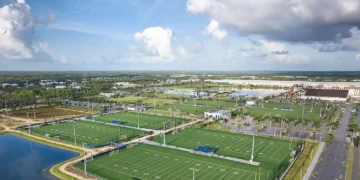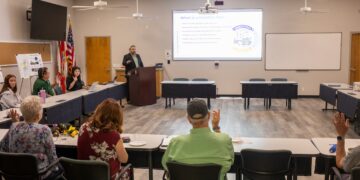Tom Rossi arrives at Seed & Bean, a downtown Fort Myers cafe, and walks inside not-quite soaked after a late summer downpour. He is here to talk about affordable housing—and the lack thereof across Southwest Florida—but before he can do that, he must define it.
Affordable housing, the term, has become a great misconception, Rossi explained, because people paying $2,000 a month to rent a two-bedroom, market-rate apartment would like to pay less. They would like to have more affordable housing.
But paying $2,100 instead of $2,600 per month isn’t what “affordable housing” means, at least not to the federal government and the entities that subsidize these projects. It’s not even close.
“Affordable housing is for people making below 60% of the area median income (AMI),” Rossi says. For true affordable housing projects to work, the tenants must not be paying more than 30% of their income toward housing, either.
The AMI for Collier, Lee and Charlotte counties’ households in 2022 was about $80,815, $71,072 and $64,860, respectively, according to U.S. Census Bureau statistics. With market-rate rents hovering above $2,273 a month for a two-bedroom apartment in Lee County, for example, that means the average household there is paying about 38% of its income toward rent instead of the recommended 30%.
To qualify for federally subsidized, affordable housing programs, a household must be making an average of $48,489, $42,653 or $38,916 per year or less, respectively, in each of those counties.
Rossi’s company, Renaissance Development, doesn’t even build affordable housing projects. Instead, he specializes in “workforce housing,” which often gets confused with affordable housing, because workforce housing is “more affordable” than market-rate and luxury apartments. A little confusion is understandable.
“Workforce housing is for people making between 100% and 120% of AMI,” Rossi says, which in the three-county area will be about $80,000 per household. These are teachers and firefighters, police officers and the like. “We will be 15% to 20% less monthly rent than anybody else in the U.S. 41 corridor.”
Rossi’s talking about his planned apartment project called Bloom, which has yet to figuratively bloom—or literally, break ground—due to delays.
Renaissance Development bought the 5.7-acre site at 2010 Hanson St. in midtown Fort Myers in January 2022 for $2 million. It had been an abandoned Araba Shriner’s Hall that was razed earlier this year. The plan remains to build 336 workforce housing units at the site. The delays, Rossi said, have resulted from inflation, rising interest rates and a rise in AMI in Lee County.
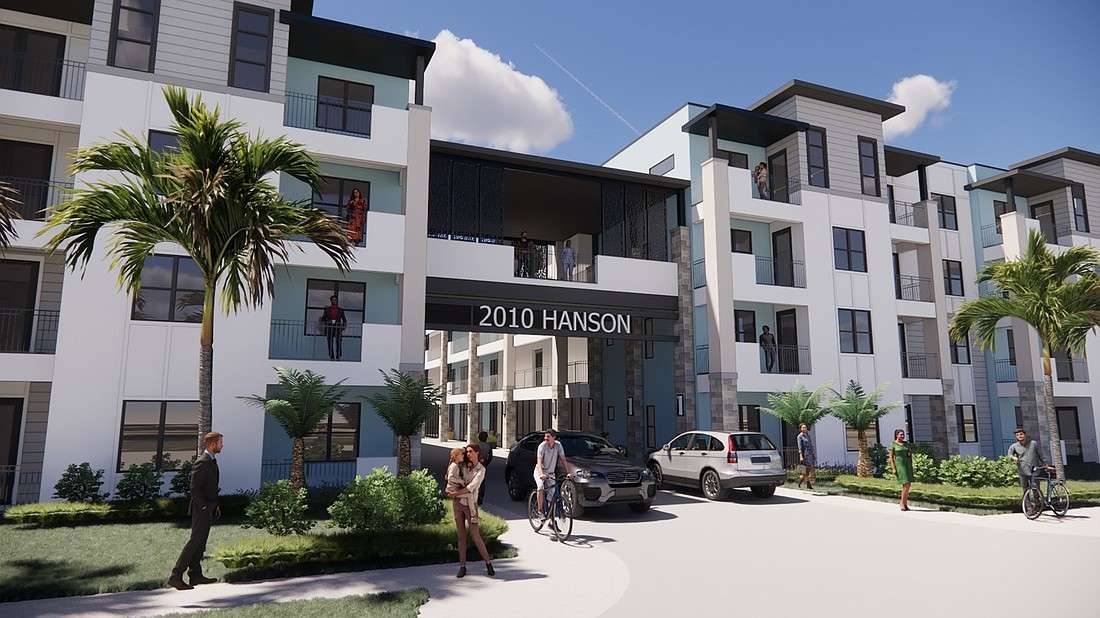 Making the numbers work
Making the numbers work
On July 1, Gov. Ron DeSantis signed the Live Local Act, also known as Senate Bill 102. The laws, introduced by Alexis Calatayud, a Republican senator from Miami, provided state incentives to developers to try to get them to build more workforce housing units.
Effective through Oct. 1, 2033, taxpayers can contribute money to Florida Housing in exchange for dollar-for-dollar credits toward their corporate income tax liability and/or insurance premium tax liability, the law states.
Taxpayers who wish to participate can apply for an allocation of tax credits. They cannot claim the credits until receiving a certificate of contribution from Florida Housing. The program has a $100 million cap in tax credit allocation.
These incentives should help spur development of workforce housing, Rossi said. “The idea was to increase the housing supply,” he says. “The only way rents are going to go down is with supply and demand. It’s helped encourage more units to be built.”
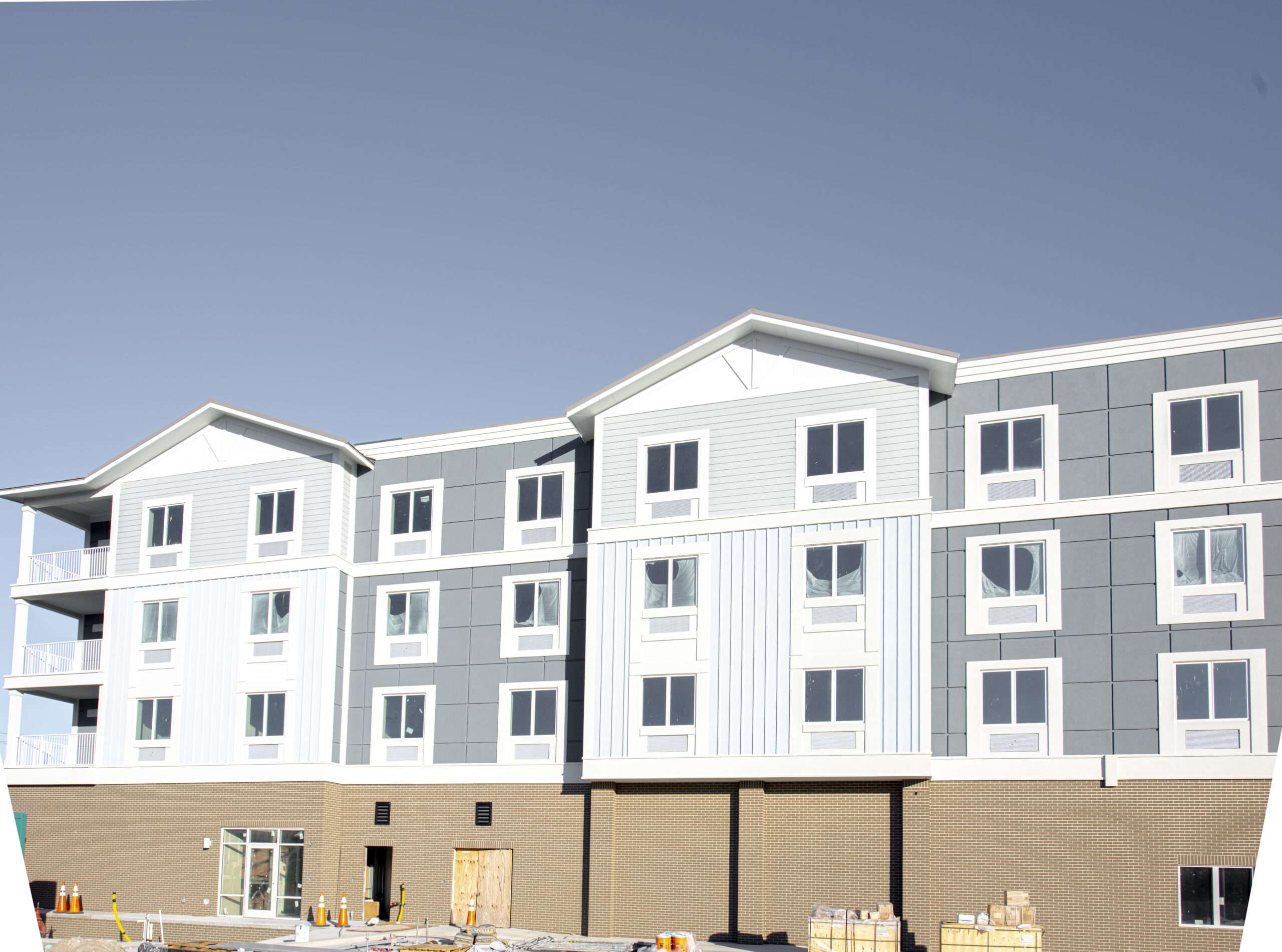
Modern Apartments under Construction – Construction Site – Architecture
The specialist
Michael Allan founded ReVital Development in 2020, positioning it to build a mix of affordable and workforce housing complexes. His company’s first project, Civitas, will be the first affordable apartment complex built in Cape Coral in 25 years, and the first-ever workforce apartment complex in Florida’s second-largest city in terms of land mass after Jacksonville.
“The City Walk deal, that was the last market-rate project I did,” says Allan, who had partnered with Joe Bonora on that apartment complex near downtown Fort Myers before starting ReVital. “Anything new has been a focus on affordable or workforce.”
Civitas will have 96 units off Pine Island Road. “With Civitas, it’s an affordable and a workforce community,” he says. “One-, two- and three-bedroom units.”
Of the 96 units, 23 of them will be set aside for households making 30% of AMI. There will be 45 units set aside for households making up to 60% of AMI. And there will be 28 workforce units for households making up to 80% of AMI.
Some of the challenges in developing these projects are neighboring property owners who don’t want them nearby, Allan said. “Oftentimes, people are saying they don’t want a brick building like one that’s in the Bronx,” he says. “That’s the stigma that’s there. In Cape Coral, there’s a market-rate property going right next door. Aesthetically, our goal is to not be able to tell the difference between low income and market rate.
“It’s all concrete block. We have hurricane-impact windows. We have energy-efficient appliances. We do have some granite countertops, but not all of them do; some of them have Formica.”
Affordable and workforce projects have been fewer and farther between, Allan said, because of financing. Allan’s company bought the land for $1.37 million in May 2022, then sold it to the Lee County Housing Authority in January 2023 for $1.4 million with the agreement to continue developing the project.
“Your net operating income, that’s really what drives the size of your debt, meaning your mortgage,” Allan says. “For a market-rate project, you can get a much bigger loan, and you can put less equity into the project. You can provide your investors enough of a return.
“With affordable housing, you’re reducing your rents to focus on these low-income demographics. Your mortgage you’re able to attain on that property is substantially lower. On affordable deals, because your rents are substantially lower, the debt you’re able to achieve is substantially lower. The amount of equity you’re going to have to provide is higher. The way we fill that gap is by funding subsidies.”
Those funding subsidies just got more palatable to large companies because of the dollar-for-dollar tax credits in the Live Local Act, Allan said. “An example, for comparison purposes,” he says: “on Civitas, our permanent mortgage is going to be about 16.5% of the total cost. The biggest subsidy nationally is low-income housing tax credits. And that’s a complex business. In Cape Coral, for example, the tax credit is about $14.5 million. It’s a tax credit the federal government provides. That goes directly into the project.
“Raymond James is our tax credit syndicator. They put that into the deal as equity. Truist Bank and Fifth Third Bank are two investors. They invest in distressed areas. They do it to meet that need.
“Then you have somebody like a large corporation, like Publix or CVS. They want to offset their tax liability. They’ll invest into Raymond James, and then Raymond James puts it into a project like ours. That’s why it’s really complicated.”
Developers who can navigate those complexities can reap some financial rewards. They just can’t make as much as they can when building the luxury and market-rate apartments that are dominating in Southwest Florida, Allan said. “The cash flow, after you pay your debt, should be enough to give your investors a return,” he says. “There’s enough there. We do make money. It’s just that you’re not going to have a big windfall like the market-rate guy will.
“On these affordable ones, we tend to hold them for at least two years. And the project cost, typically, significantly exceeds the value of the property.” Allan said he expected Civitas to cost about $35 million, with $22 million going toward construction.
Up next for ReVital Development will be building Hermosa in North Fort Myers. That’s off U.S. 41, about a mile north of Merchant’s Crossing. The two-phase project will begin with 72 units, followed by 88 more for 160 total. All will be “affordable,” and they will be geared toward people ages 62 and older with preferences to veterans. The complex will be four stories with an elevator, clubhouse and pool.
The Hermosa project would have broken ground sooner, but ReVital missed out on a prior attempt to land funding. On Sept. 5, it received a 9% tax credit from the state, which covers about 70% of the project cost. “That’s why that 9% is so coveted and so competitive,” Allan says. “You still need a big income amount from somewhere else.
“In the 2021 cycle, Lee County approved us. We didn’t get funding,” he says. “We came back in 2022. The county supported us for the second year. We were the first selected application, Dec. 26, 2022. We officially received the award in May or June of this year, it was a tax credit. It ends up being $18 million. It’s a big one. That’s what really makes this possible: You have to either own the land or have site control, meaning you’re under contract for the land.”
 The Greater Dunbar Initiative
The Greater Dunbar Initiative
Gloria Henderson and Lizzie Kelly emerge from the brown house built in 1960 on Dora Street, part of Southward Village in Fort Myers. Soon, this house and the others surrounding it are expected to be razed. The neighborhood will become the epicenter of a revamped Fort Myers Housing Authority project called the Greater Dunbar Initiative. This is part of the federal government’s Choice Neighborhood Initiative, which was signed into law by President Barack Obama in 2009.
Kelly, who is retired, has lived in the house for 12 years. She pays $169 a month in rent. Henderson used to live there until she purchased and moved into a manufactured home in Lehigh Acres three years ago, before the COVID-19 pandemic. She and her family paid $82,000 for the home.
“And thank God,” says Henderson, of the decision to buy when she did, before losing her housekeeping job at Pink Shell Beach Resort after Hurricane Ian wrecked it last year. “Because I would be in serious, serious trouble right now [otherwise]. The storm retired me. Nobody can afford to live here anymore.”
Just one hour later and 3 miles away, a ceremony begins in a conference room at the Fort Myers Housing Authority offices off Michigan Avenue. Jenna Persons-Mulicka, a state representative for District 78 and an attorney who works with attorney and housing authority chairman Bruce Strayhorn, poses for photographs along with Jonathan Martin, a state senator for District 33. They hold a ceremonial check made out by the state of Florida to the housing authority for $2 million.
“I’m so humbled to be a small part of this incredible project,” Persons-Mulicka says to a group of fewer than 20 people and no other media members. It hasn’t been getting much attention, but it will change a large section of Fort Myers for the better, Fort Myers Mayor Kevin Anderson said.
Lizzie Kelly realizes her days at the current Dora Street home are numbered; that she soon will move into temporary housing while Dora Street and the surrounding area gets rebuilt. But when the time comes, she does plan to reapply so she can return to the area.
“Everything that’s going to start happening in the next couple of years is going to be amazing,” Anderson says. “We look forward to the day when things are opening, and people are moving in.”
The Greater Dunbar Initiative will be built with at least a $30 million injection of funds from the federal government’s Department of Housing and Urban Development. The grant carried with it some conditions, including razing and rebuilding Franklin Park Elementary School, a $53 million construction project, and building a new police station within the project’s boundaries.
The city purchased the old News-Press building at 2442 Dr. Martin Luther King Jr. Blvd. in December 2019 for $8.9 million because it lies within those boundaries, said Marcia Davis, executive director of Fort Myers Housing Athority. But the boundaries are also why the city is considering buying a property just to the south on Market and Fowler streets—to build the new police station there instead. Doing so would free the News-Press site for more workforce housing and retail opportunities, she said.
More federal money for housing will be on the way in the form of post-Hurricane Ian funding, of which 70% of the $1.1 billion will go toward affordable housing.
Davis was joking and serious at the same time when she said developers are smelling blood in the water regarding those forthcoming federal grants. “Because all of a sudden, these developers are coming out of nowhere,” Davis says. “I already have all of these projects already in the pipeline. Things can get done now.”
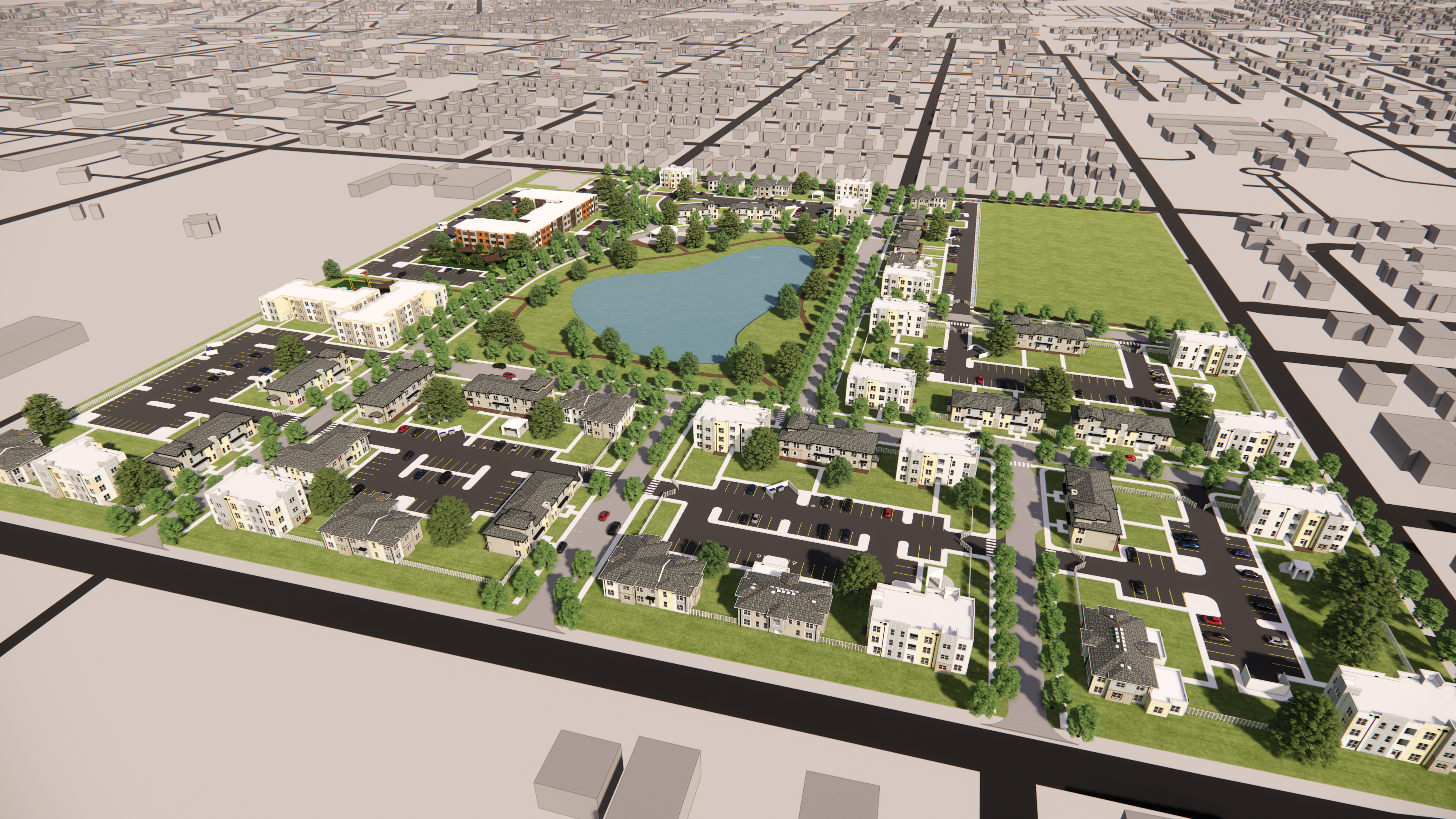 Long road to getting things done
Long road to getting things done
The Fort Myers Housing Authority hired McCormack Baron Salazar, a national affordable housing company based in St. Louis, Missouri, to oversee the Greater Dunbar Initiative in 2021.
“Why does it take so long?” says Sandra Seals, a senior vice president with McCormack Baron Salazar. “Lots of efforts, like the Greater Dunbar Initiative, take many, many years. It often starts with a vision or a meeting. In the case of Dunbar, it was both. Those conversations might start many years before you start moving any dirt. You start having conversations with local governments about possible funding. What can they do?
“In the case of the Fort Myers Housing Authority, we did all of the community engagement with the residents. We help them visualize what the new community will look like. Then they start shopping for a developer. We submitted. We competed. Once we came on board, we helped the housing board put together a grant application to help.”
Seals and her team manage every aspect of the project. “We take it from the very beginning all the way to when it starts leasing up,” she says. “We start the competitive process of selecting an architect, hiring a general contractor. Environmental consultants. Civil engineers. The whole development team, we select.
“Once they put the shovel in the ground, we really start to see these communities coming up out of the ground. We continue to engage with the residents so they are aware of the progress.”
Yes, local politics must be navigated, Seals said. So must appeasing both the residents who will live in the apartments and the neighbors who might not want them living nearby.
“In Fort Myers, the Housing Authority already has some relationships with the mayor and others,” Seals says. “So, we didn’t see the tension that we find in some other cities.”
Seals’ team also manages any NIMBY—Not In My Back Yard—issues that arise. “The resistance is oftentimes just fear of the unknown or fear of change,” Seals says. “I think the public housing of yesteryear gives a lot of people a lot to think about. They think about the projects of 40 or 50 years ago. This is not that.
“Everyone wants to feel safe where they live. That’s usually the fear, as well: They don’t want to put their safety at risk. Our projects include green space for people to walk and places for kids to play. This is a whole different model. Oftentimes when we describe the vision and we show the success stories, that helps people a lot.”
Getting it going
Rossi of Renaissance Development said developers must adapt. With rising interest rates, most banks are requiring more capital to proceed with lending. A project that could have been approved with 50% capital a year ago might not be approved without 75% capital now, he said. “That’s what it takes to make it work,” Rossi says.
Rossi and other developers also look for certain critical ingredients to get their projects going. As he sits in Seed & Bean, the rain continuing to fall, he makes it clear that developing affordable housing—or in his case, more affordable than the average—gets challenging.
“You need three things to do workforce housing,” Rossi says. “Density, parking reductions and [tax increment financing].”
Those 336 units at Bloom end up paying for the $2 million to buy the land, plus the expected construction costs. Developers look for parking reductions because a parking spot costs between $10,000 and $20,000. In the case of Bloom, there will be 1.5 parking spots per apartment in a 506-space parking garage.
Renaissance also will receive an $8.2 million TIF from the Fort Myers Community Redevelopment Agency. “The equity has to clear a hurdle,” Rossi says. “If you can’t clear that hurdle, the project can’t happen.”

The state of government housing
There are thousands of people hoping for government assistance in getting housing in Collier, Charlotte and Lee counties.
With the construction of market-rate and luxury apartment units continuing to rise across the region, affordable housing for people with household incomes at or lower than $43,350 per year, which is about 60% of the Southwest Florida area’s median income, has become more difficult to find. And it has put a strain on the area’s three biggest public housing authorities.
“It’s a big problem out here,” says Oscar Hentschel, executive director of Collier County Housing Authority. “People have to be aware. A lot of people are sleeping in their cars. And we try to help them.”
Hentschel said there’s a waiting list of at least 80 families hoping to move into one of the existing 591 units. Most of those units are located in Horizon Village in Immokalee. There are 315 units set aside for agricultural workers and 276 units for low-income earners, he said. In the city of Naples, there are eight units, which is less than 2% of the total. “We’re just starting to acquire rental units that we can rent with housing assistance,” Hentschel says. “Three to four per year as we can get funding.”
There are no plans to add any more units via new construction, he said. “We have to talk to the county to see when the funding would become available,” Hentschel says.
As executive director of Punta Gorda Housing Authority, Kurt Pentelecuc oversees 321 affordable housing units. Of those, 184 receive public funding. The organization answers to the Punta Gorda City Council but covers all of Charlotte County, including North Port.
The organization is still recovering from the 2004 devastation of Hurricane Charley, which destroyed 154 public housing units, leaving only 30. “Currently, we are still doing a final phase of replacement of 150 public housing units,” Pentelecuc says. “We still have four unbuilt projects.”
In Punta Gorda, Gulf Breeze apartments were revitalized and rebuilt with 171 units, 85 of which are public housing. The Veranda of Punta Gorda, Phase 1 and 2, will create 120 affordable housing units, with 65 of them public housing, he said. “Our waiting list averages anywhere from 16 to 24 months. We are accepting new applicants,” he says. “On average, what we’re seeing is it ranges anywhere from 100 to 275 families per unit waiting. We’ve seen an increase in calls and inquiries on housing assistance. There’s just not enough.”
Fort Myers Housing Authority has the highest number of units, the biggest forthcoming influx of money and plans to build more units. It also has by far the longest waiting list of the region’s three largest organizations.
There are about 1,400 affordable housing units in Lee County, said Marcia Davis, executive director. “We have 10,000 people on a waiting list.”
The Greater Dunbar Initiative, expected to break ground in early 2024 and be finished by the end of 2026, should help alleviate some of the burden, Davis said, with the planned construction of 467 new units.
The project will be funded with about $30 million from the U.S. Department of Housing and Urban Development. Up first, building 92 units off U.S. 41 in a lot that used to be a used car dealership. Upon completion of that, Southward Village, located off Edison Avenue, will be razed and rebuilt over three phases on about 40 acres of land that has been reenvisioned.
“There’s always a gap,” Davis says. “And we have to fill it.”
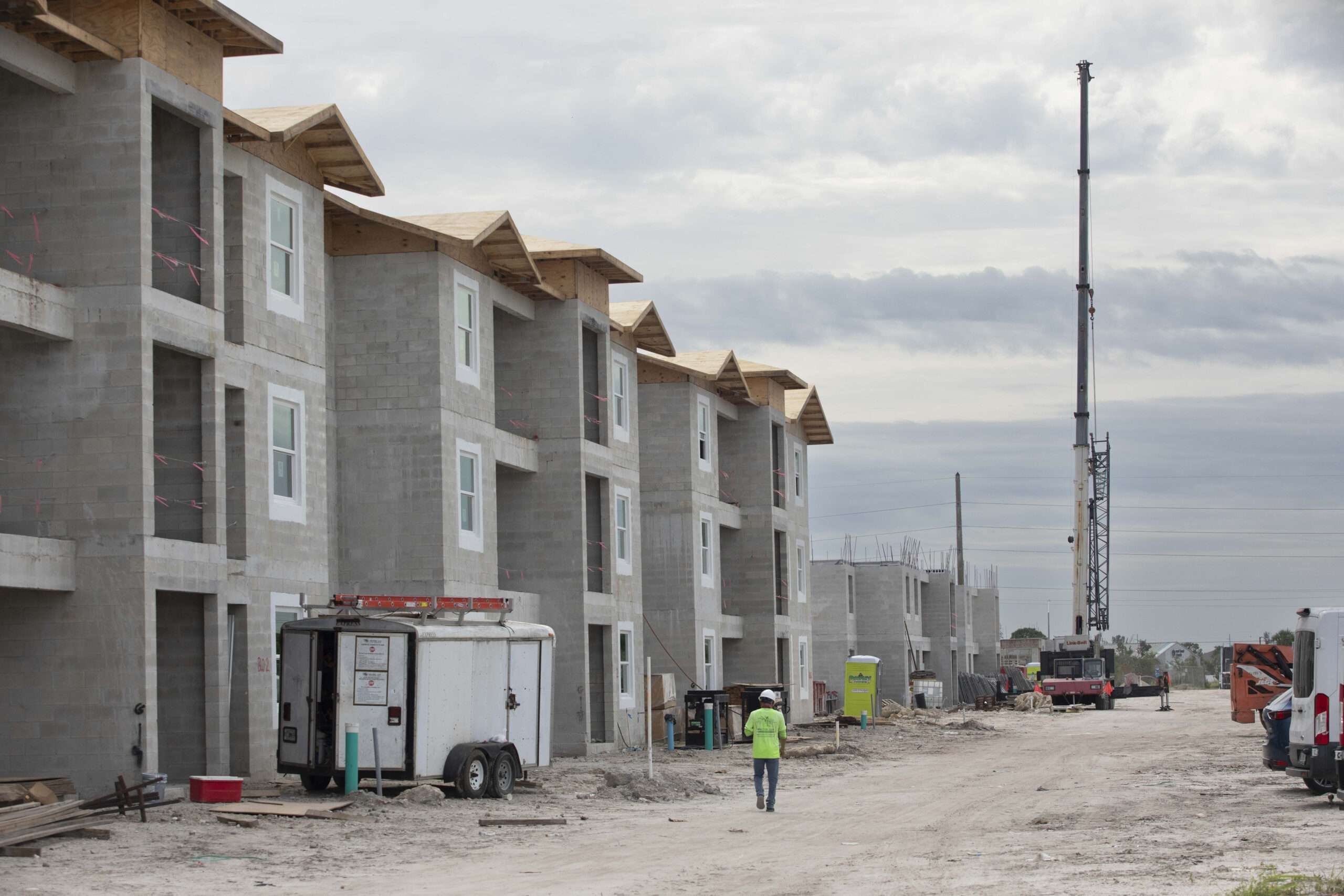
Erik Kellar/Photographer
Rent affordability
Rent affordability has gotten tougher and tougher to attain in Southwest Florida, according to data studied by Florida Gulf Coast University professors. The gap between low- and high-income households in the region continues to widen, said H. Shelton Weeks, a professor of finance and the director of the Lucas Institute for Real Estate Development and Finance at FGCU. He began studying rent affordability in early 2022, looking at IRS service migration data.
In the Cape Coral/Fort Myers area, the expected average rent of $2,098 was eclipsed by the actual average rent of $2,273. That means instead of spending the government’s recommended 30% of income toward housing, Lee County households were and are paying more than 38% of their income toward housing.
With the 2022 area median income at $71,072, households actually needed to be making more than $90,917 for that housing to be “affordable.” That’s a gap of more than 28% in pay. “Our numbers systematically understate the amount of income needed to not be rent burdened,” Weeks says, because calculating utilities over such a large area just wouldn’t work in compiling an accurate formula.
“The important thing, when we look at these numbers from an affordability angle, you’ve got to look at ‘How can we increase the supply at numbers that are below this?’”
Weeks put his students to work and learned the answer to that question was next to impossible.
“There is no way that you can buy the land and improve it with apartments built to code and rent it below these numbers,” Weeks says. “Anywhere in coastal Southwest Florida—you can’t do it. The land costs too much. The number you’re going to have to get to potential development with cashflow is significantly higher than this.”
Hurricane Ian, which struck the region on Sept. 28, 2022, further widened the gap, Weeks said. “You think about the housing stock we lost in Ian,” Weeks says. “That was generally the older, most vulnerable housing stock in our market, which also would have been our most affordable.”
As higher-income families migrate to Florida, lower-income families have been leaving, a trend found by FGCU research economist John Shannon.
Gentrification is a word that has been used for hurricane-ravaged areas, such as Fort Myers Beach, but it’s also taking place across the entire region and throughout the state, numbers show.
In 2018-19, there were 1,302 new households coming from New York, for example. They had an average income of $144,839. Households leaving for New York had an average income of $78,714.
In 2021-22, the trend intensified, with 2,723 new households moving from New York. Incoming households made an average of $197,071. Outgoing households made $97,956.
“I think when you start to see the numbers, it hits people over the head,” Weeks says. “This is a significant issue for us. When you think about the growth of our area, and the number of people we’ve got coming here—if we don’t figure out how to provide some people who provide all the services we need as a society, we’re going to have some problems.”
The widening gap means service workers are fleeing not just the area, but Florida in general, for more affordable housing. Lower-income households are moving to Georgia, North and South Carolina, Tennessee and Texas, the data shows. They are being replaced by higher-income earners from New York, Illinois, New Jersey, Massachusetts, Michigan and Pennsylvania.
As more service-oriented workers leave, there could be a lack of service providers in the area, said Matt Simmons, property appraiser with Maxwell, Hendry and Simmons in Fort Myers. “There is definitely a shift in who’s moving here,” Simmons says. “A lot of it is simply about the U.S. economy shifting and more people working remotely.
“We’re getting people coming here who are younger, white-collar workers with higher incomes. Many of them can come because they’re keeping their corporate job back north but now just working remotely. We started seeing a lot of it during COVID, but just because the pandemic is over doesn’t mean that the trend goes away. In fact, we still might be in the early innings of this trend.”
Moving in, moving out
Between 2018-19 and 2020-21, trends escalated with an influx of higher-income households migrating to Southwest Florida, combined with an exodus of lower-income households departing.
In 2018-19, there were almost 5,000 newcomers from the top five states arriving to Southwest Florida, and they were making an average of $217,404 per year. Those leaving were making an average of $104,423 per year.
In 2020-21, there were closer to 10,000 newcomers from the top five states arriving to the region. They were making an average of $239,838, while the people leaving were making an average of $102,992. John Shannon of FGCU compiled the IRS data on service migration.
